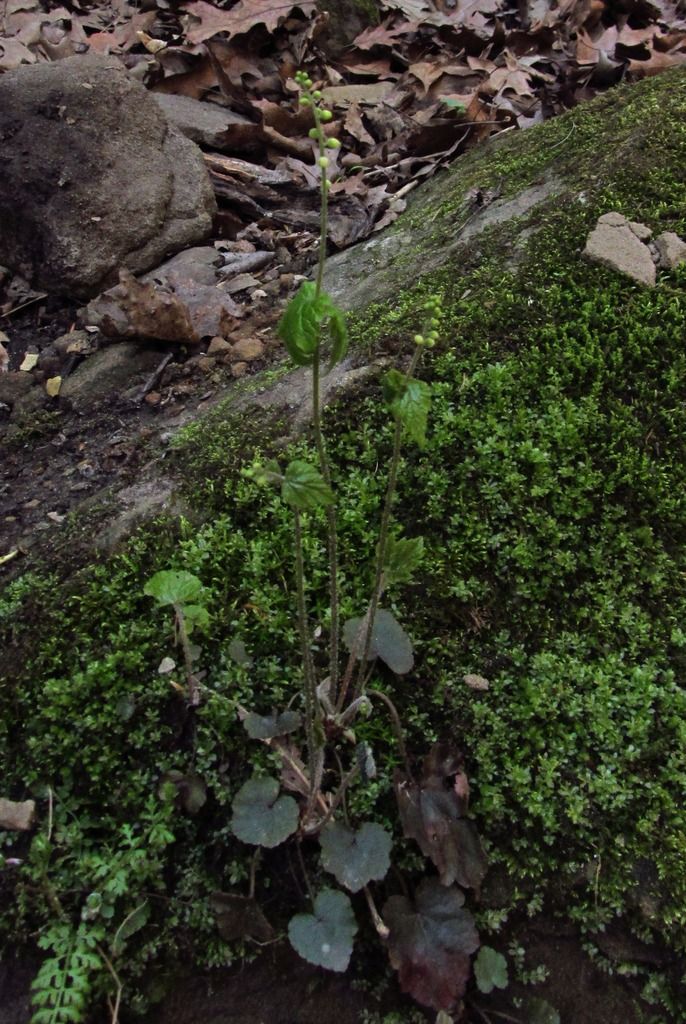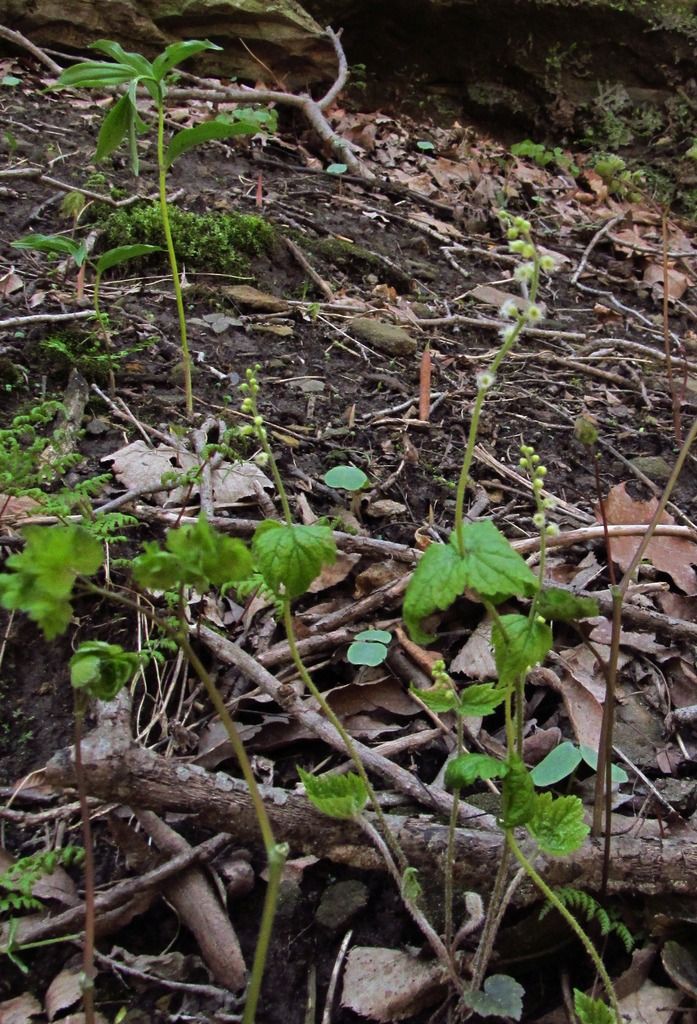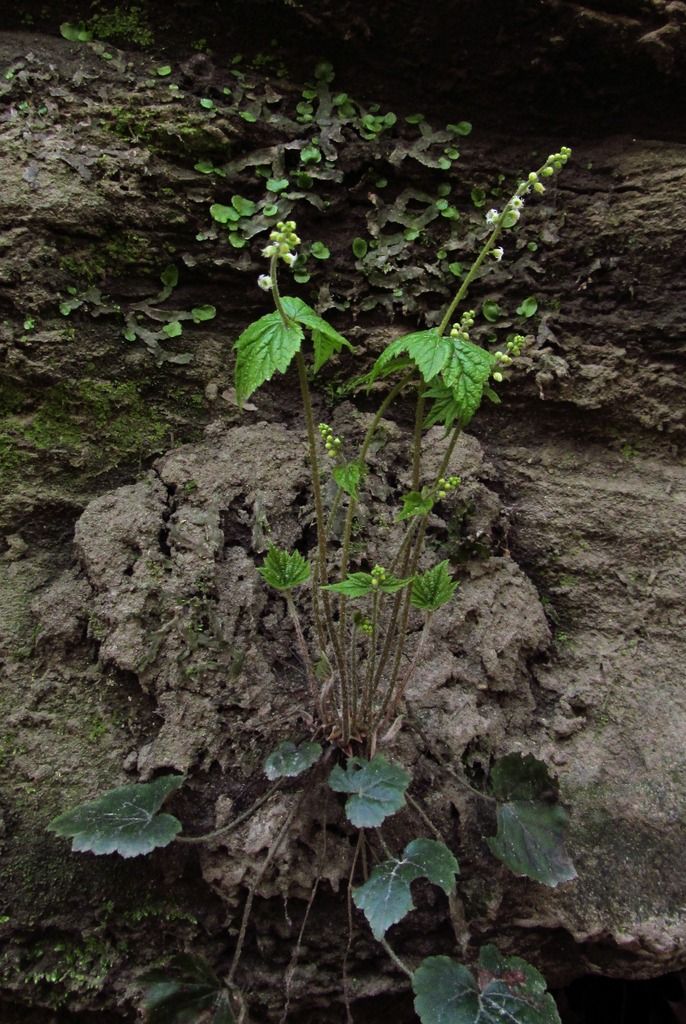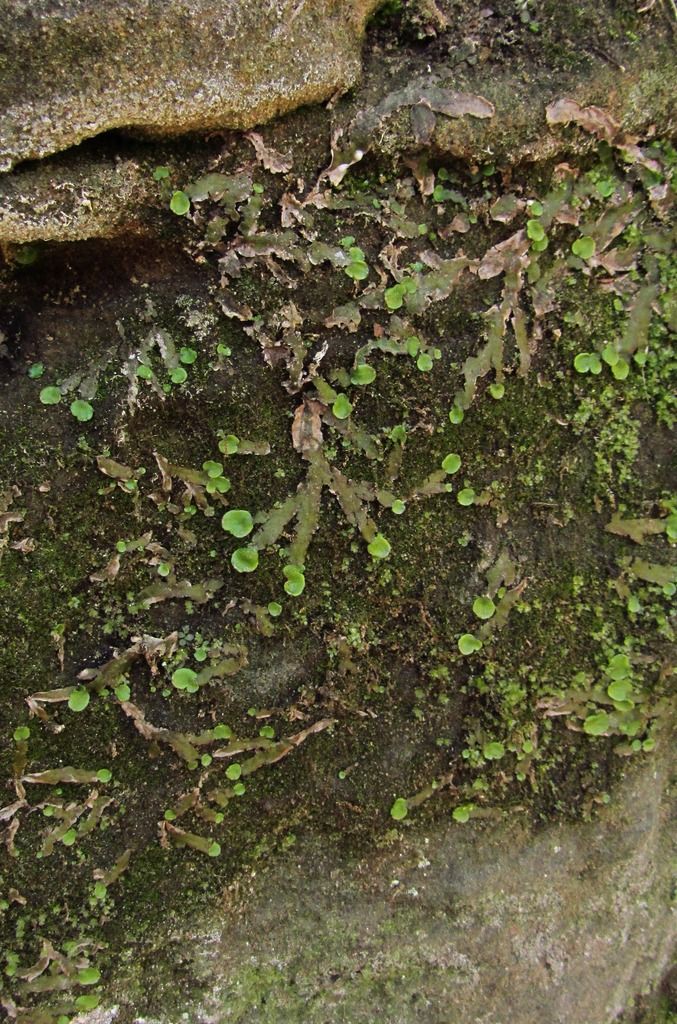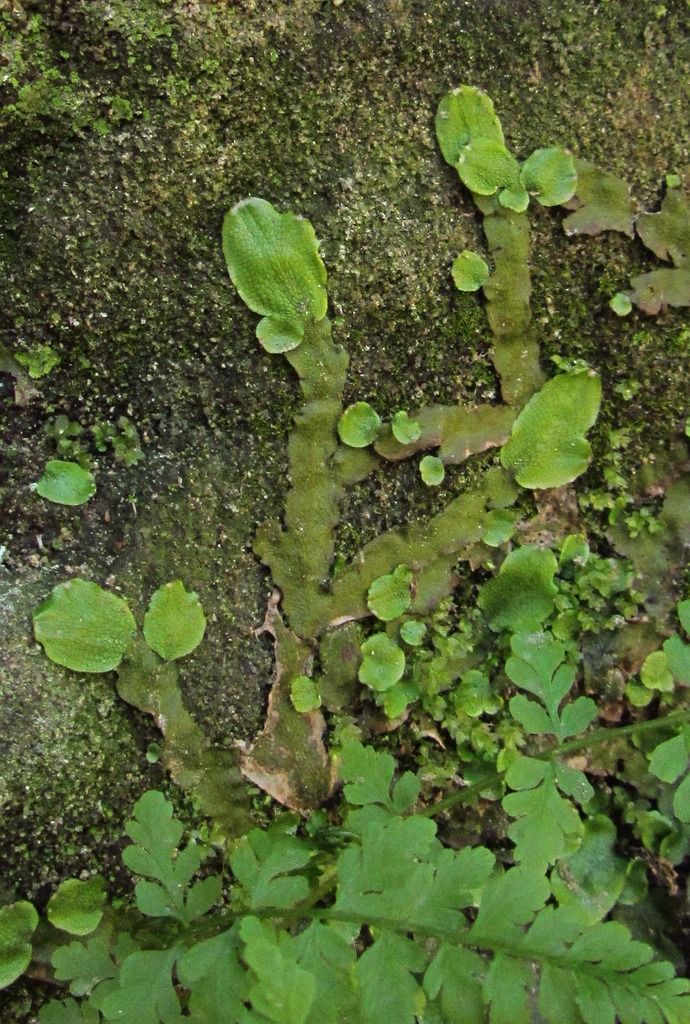Iowans who venture to wooded areas this Memorial Day weekend will likely see many mid-spring wildflowers. Wild geranium and Virginia waterleaf are still going strong in my corner of the world, and you may find False rue anemone, May apples (umbrella plants) or Columbines in bloom. This week I saw the first flowers on black raspberry plants. If you see those, check back in late June or early July to pick the berries (technically, compound drupes). Wear jeans to avoid getting torn to pieces by the thorns.
This week’s featured wildflower was new to me on a recent visit to Dolliver Memorial State Park in Webster County. Bishop’s cap (Mitella diphylla) is native to much of the U.S. east of the Missouri River. It’s not a show-stopper, but some consider its “small delicate flowers […] very attractive and fairy-like.” As a bonus, I’ve also enclosed below a few pictures of liverwort, a non-flowering plant that thrives in damp and rocky habitats, as does Bishop’s cap. Liverworts are “the simplest true plants,” so ancient that they predate ferns and mosses as well as plants producing flowers and seeds.
This post is also a mid-week open thread: all topics welcome.
Final note: I saw what looked like a heavily pregnant doe the other day, which reminded me of the Iowa Department of Natural Resources’ good advice to “leave wildlife babies in the wild,” rather than attempting to rescue animals you may assume to have been abandoned. Deer are among the mammals that sometimes leave young offspring for a while. The mother is usually nearby.
According to Wildflowers of Iowa Woodlands by Sylvan Runkel and Alvin Bull, there are competing explanations for this native plant’s common name:
Some see a resemblance of the lacy flower to a bishop’s headdress or miter.
Others credit the twin-beaked seed pod with the origin of the name.
Mitella diphylla is also known as two-leaved mitrewort, which makes sense because it has two distinct kinds of leaves. The leaves near the base of the plant can be round or heart-shaped or lobed. They may be green or have a reddish appearance, as in this photo. Two opposite leaves (a different shape, described in correct botanical terms here) appear partway up the flowering stem. This Bishop’s cap plant is not yet blooming, but you can see the two kinds of leaves well.
The flowers that open from the lower part of the stem first are very small, about a quarter of an inch across. The Illinois Wildflowers website and the site for the Eloise Butler Wildflower Garden in Minnesota both contain close-up pictures that do justice to these tiny flowers. Neither my camera equipment nor my photography skills are up to that job, but you can get a sense of the “dainty” appearance here. Incidentally, I believe the plant near the upper left-hand corner of this shot is a False Solomon’s seal, not yet in bloom.
Near the upper right-hand corner of this picture, you can see foliage of hepatica plants that bloomed earlier this spring. Just behind the bishop’s cap, you can see foliage for Dutchman’s breeches, which would also have finished flowering before the bishop’s cap bloomed.
Bishop’s cap thrives in “moist soils in marshes, open woods, ravines and forests,” and also is often found on “rocky ground.” Here it’s growing out of what seemed like very little soil, near a wet north-facing rock. In the background, you can see an example of that primitive liverwort. To my knowledge, I had never seen liverwort before Eileen Miller pointed it out to me.
The light green areas are the new growth of the liverwort; the darker areas are left over from last year. The bottom photograph is a closer view, showing what seem like scales on the plant.

